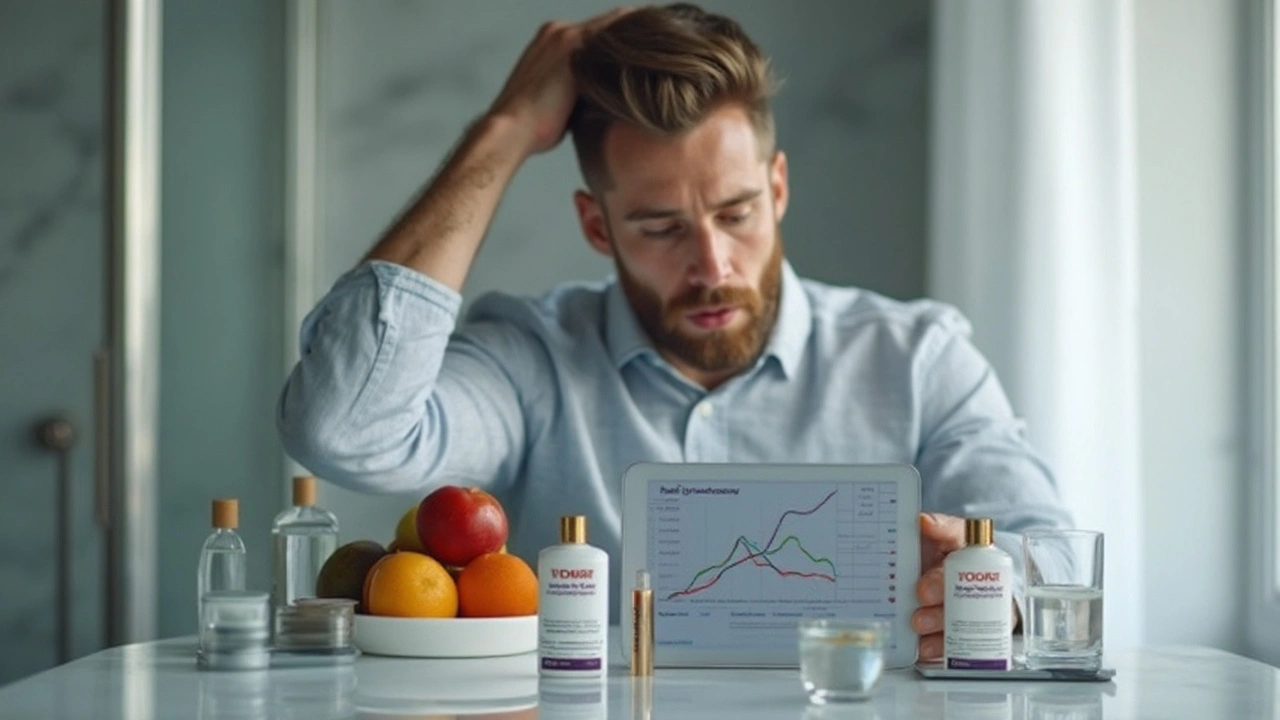If your scalp is flaky, itchy, or red, ketoconazole shampoo could help. It’s an antifungal wash that fights the yeast (Malassezia) often behind dandruff and seborrheic dermatitis. You can find 1% as an over-the-counter option and 2% by prescription in many places. The stronger formula is usually used for tougher cases or when lower-strength products don’t work.
Use it like this: wet your hair, apply a small amount, work into a lather, and leave it on your scalp for 3–10 minutes before rinsing. Leaving it on longer—around 5 minutes—is often recommended so the active ingredient has time to act. For dandruff, many people start with twice-weekly use for 2–4 weeks, then reduce to once a week or as needed to keep symptoms away.
Try to avoid getting the shampoo in your eyes. If that happens, rinse with plenty of water. If your scalp is broken or heavily irritated, check with a doctor before using any medicated shampoo.
Improvement often appears within 2–4 weeks, but some people see results sooner. Common side effects are mild: scalp dryness, irritation, or a change in hair texture. Serious reactions are rare, but stop using it and contact a doctor if you get severe redness, swelling, or an allergic rash.
Ketoconazole shampoo mainly works on the scalp. If you have fungal skin infections elsewhere, your doctor may recommend a topical cream or an oral antifungal instead.
Wondering about hair loss? Ketoconazole won’t cure pattern baldness, but there’s evidence it can reduce inflammation that makes shedding worse. If hair thinning is a concern, talk to a dermatologist who can suggest testing and a tailored plan.
Alternatives include zinc pyrithione shampoos, selenium sulfide, coal tar, and salicylic acid products. Each targets scalp issues differently: zinc pyrithione controls yeast and bacteria, selenium sulfide reduces oil and yeast, and coal tar slows skin cell turnover. If one product doesn’t help after 4–6 weeks, try another or see a specialist.
One quick tip: combine approaches. Use ketoconazole for a few weeks to knock down the problem, then maintain with a gentle anti-dandruff shampoo or a weekly ketoconazole wash. That often keeps flakes and itch under control without over-drying your scalp.
If your symptoms are severe, spread beyond the scalp, or don’t improve after a month of appropriate treatment, make an appointment with a dermatologist. They can check for other causes like psoriasis, eczema, or an infection that needs different care.
Bottom line: ketoconazole shampoo is a practical, proven option for many common scalp problems. Use it as directed, watch for irritation, and get medical advice if things don’t improve.

Searching for fewer side effects than finasteride in 2025? This article explores the best substitutes for hair loss: low-dose dutasteride, ketoconazole shampoo, and smart lifestyle changes. Find real numbers, actionable tips, and science-backed insights into managing hair loss for men who want options beyond the usual prescription. All facts, no fluff—delivered with clarity. Get to know what actually works and how to reduce risks.
More